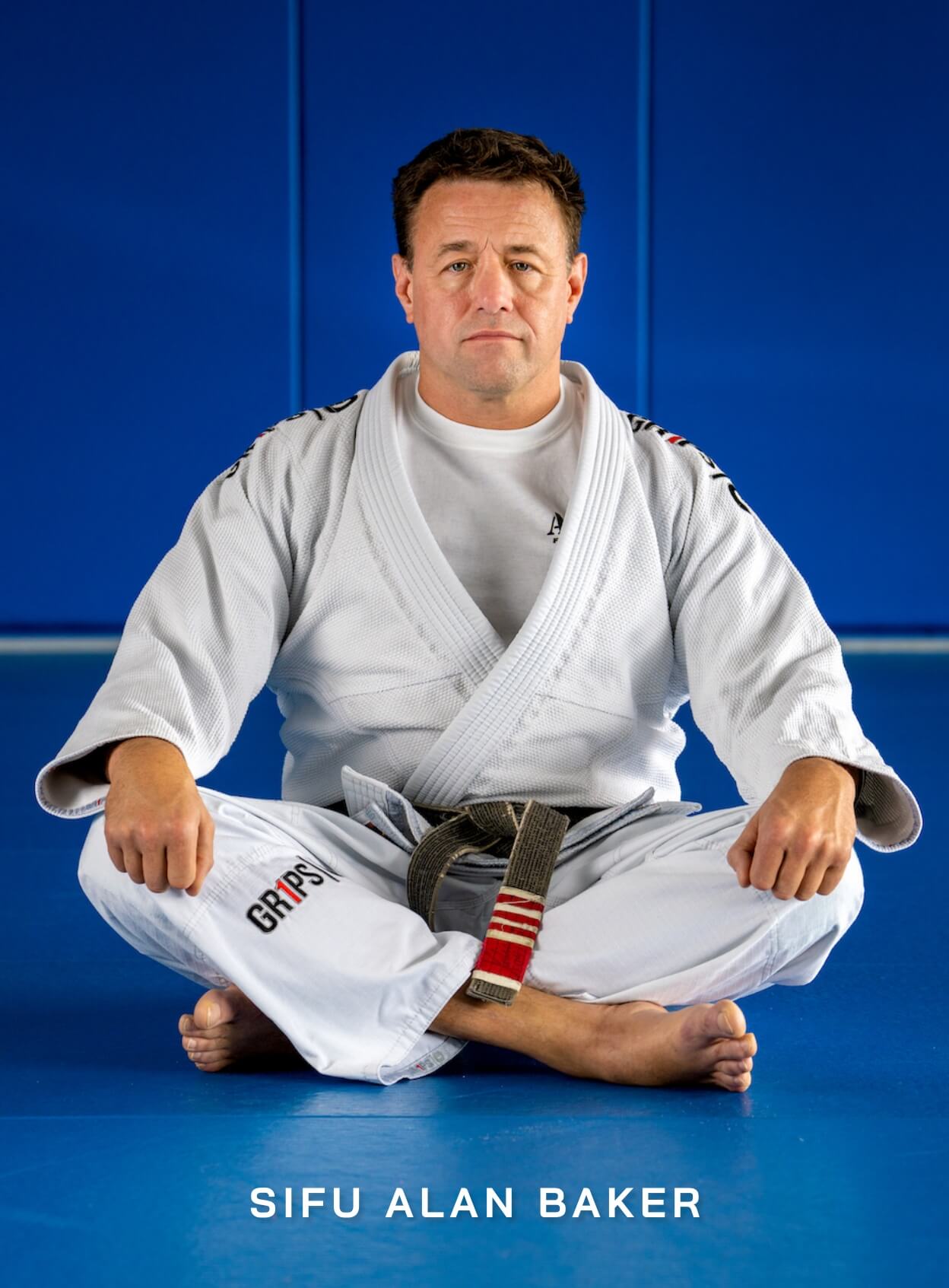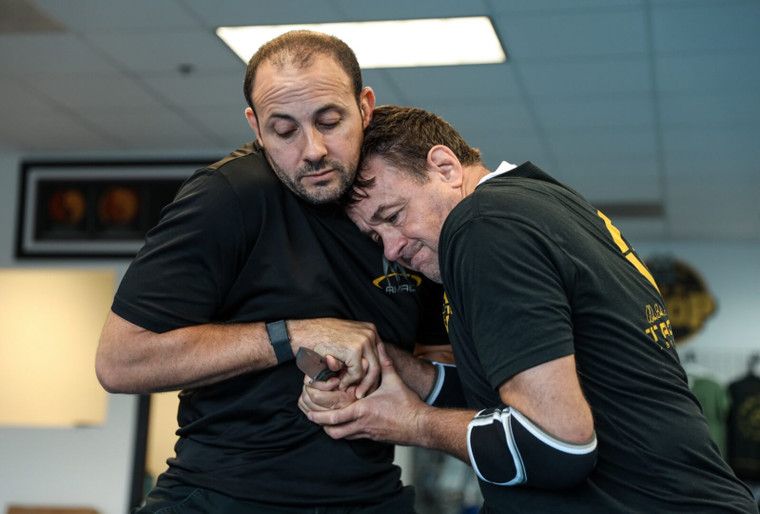Integrating Combatives with Firearms Training: The Need for a Unified Approach
Posted by Sifu Alan Baker on Jan 16th 2024
Two fields often stand out prominently in the vast landscape of self-defense training: firearms training and combatives. While many enthusiasts take the weekend route, perfecting shooting techniques one weekend and honing unarmed combat skills the next, there's increasing recognition of the need to bridge the gap between the two. This is where the "Mat To Muzzle" program enters the fray, aiming to create a seamless integration of these distinct but interconnected training domains.
The Tradition of Separate Training
Historically, combatives and firearms training have run on parallel tracks. This separation might seem logical given the distinctive skills and tactics each domain requires. However, real-world situations rarely offer the luxury of a clear distinction between situations best addressed with empty-hand techniques versus those that necessitate firearm use.
Why Integration Matters: The Fluidity of Threat
Violent encounters are unpredictable. There's no script that an assailant follows, and frequently, confrontations erupt without warning. Imagine being sucker-punched or ambushed suddenly. In such scenarios, the immediate reflex might not be to draw a firearm, even if one is concealed on your person. It becomes paramount to employ effective combative techniques to neutralize the threat and safeguard your firearm from the threat.
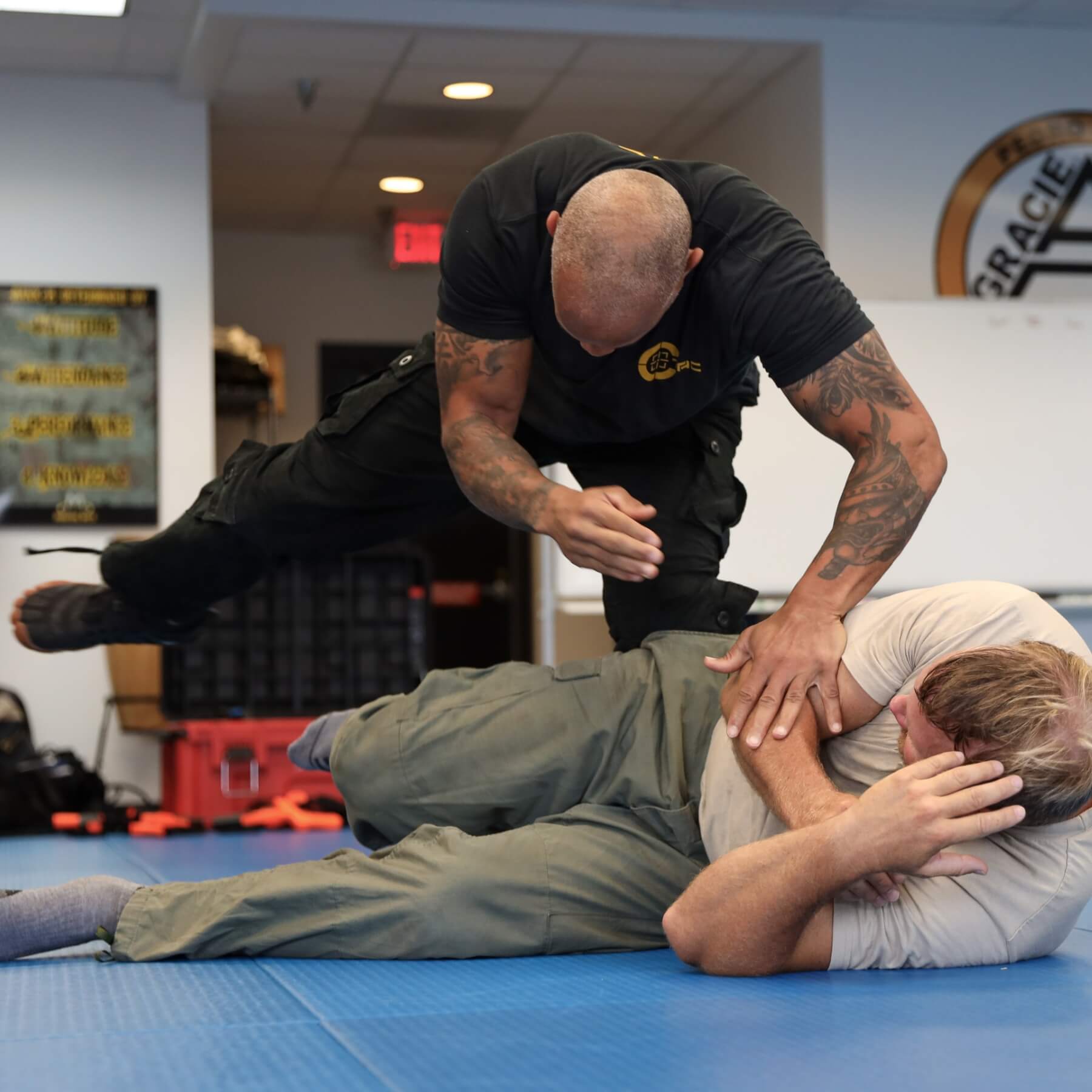
The Challenge of Protecting Your EDC
Everyday carry (EDC) refers to the items you carry daily, including, most notably for this context, your concealed firearm. While effective in their own right, traditional martial arts might not factor into the EDC equation. Therefore, standard martial techniques might expose the firearm to potential threats when grappling with an assailant while also bearing a concealed firearm. Such exposure could escalate the situation, making it even more dangerous.
Adjustments in methodology become essential to ensure your EDC remains secure. This unique challenge underscores the importance of the Mat To Muzzle program's emphasis on close-quarters firearm manipulation.
The Close-Quarter Reality
The harsh truth is that many confrontations begin within the intimate range of 0 to 5 feet. At such close quarters, the decision-making process isn't black and white. Do you draw your weapon immediately, or do you engage in hand-to-hand combat to create an opportunity for a more strategic use of your firearm? This is the dilemma that many face, and it can be challenging to decide on the fly.
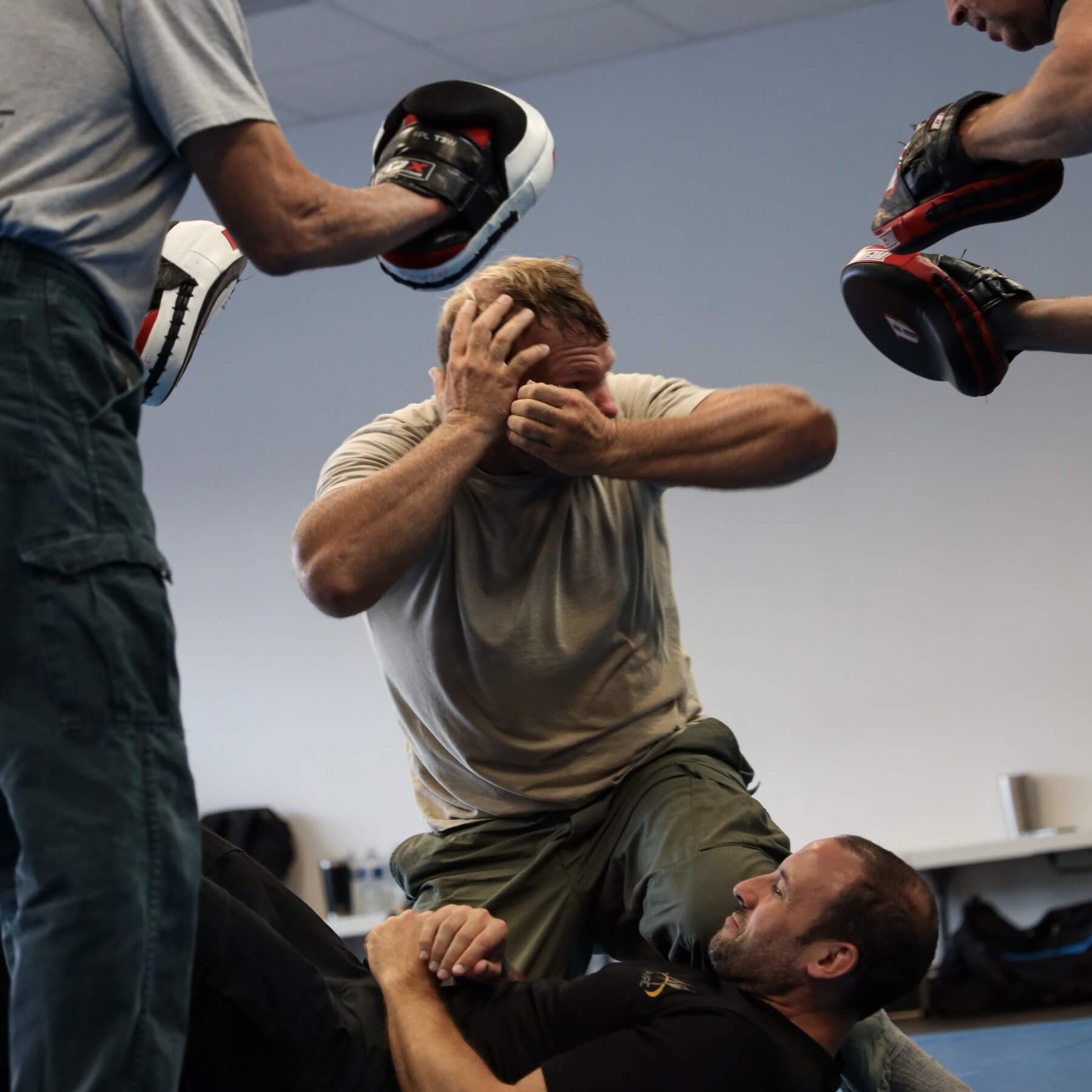
The Mat To Muzzle program recognizes this dilemma and strives to equip its participants with the skills needed for such situations. The goal is not just to train individuals in firearm use or combatives independently but to amalgamate these skill sets, ensuring that individuals can transition seamlessly from unarmed to armed tactics as the situation demands.
As the landscape of self-defense evolves, so too must our training methodologies. The Mat To Muzzle program is at the forefront of this evolution, pushing the boundaries of traditional training and emphasizing the need for a unified, integrated approach. In a world where threats are as unpredictable as they are dangerous, being versatile and adaptable could make all the difference.
Navigating the Pre-Physical Engagement
In the realm of civilian self-defense, the physical altercation often captures the most attention. However, what precedes it is just as vital, if not more so. Before any punch is thrown or any weapon is drawn, there's a delicate dance of words and body language that transpires. This phase, often overlooked, is integral to how the subsequent events unfold.
Understanding the Social Prelude to Conflict
Conflicts rarely explode into physicality without warning. There's a buildup—a simmering tension marked by verbal exchanges, body posturing, and a series of micro-interactions. This preliminary phase serves as both parties' attempt to gauge, assert, and potentially diffuse the situation. It's a delicate balance of assertion and evaluation.
This social buildup is akin to a chess game, where each move and countermove carries significance. Every word, gesture, and even tone of voice can escalate or de-escalate the situation. Mastering this art of confrontation is just as crucial as honing one's fighting skills. This is what we train with the "Sidewalk Drill" in the program.
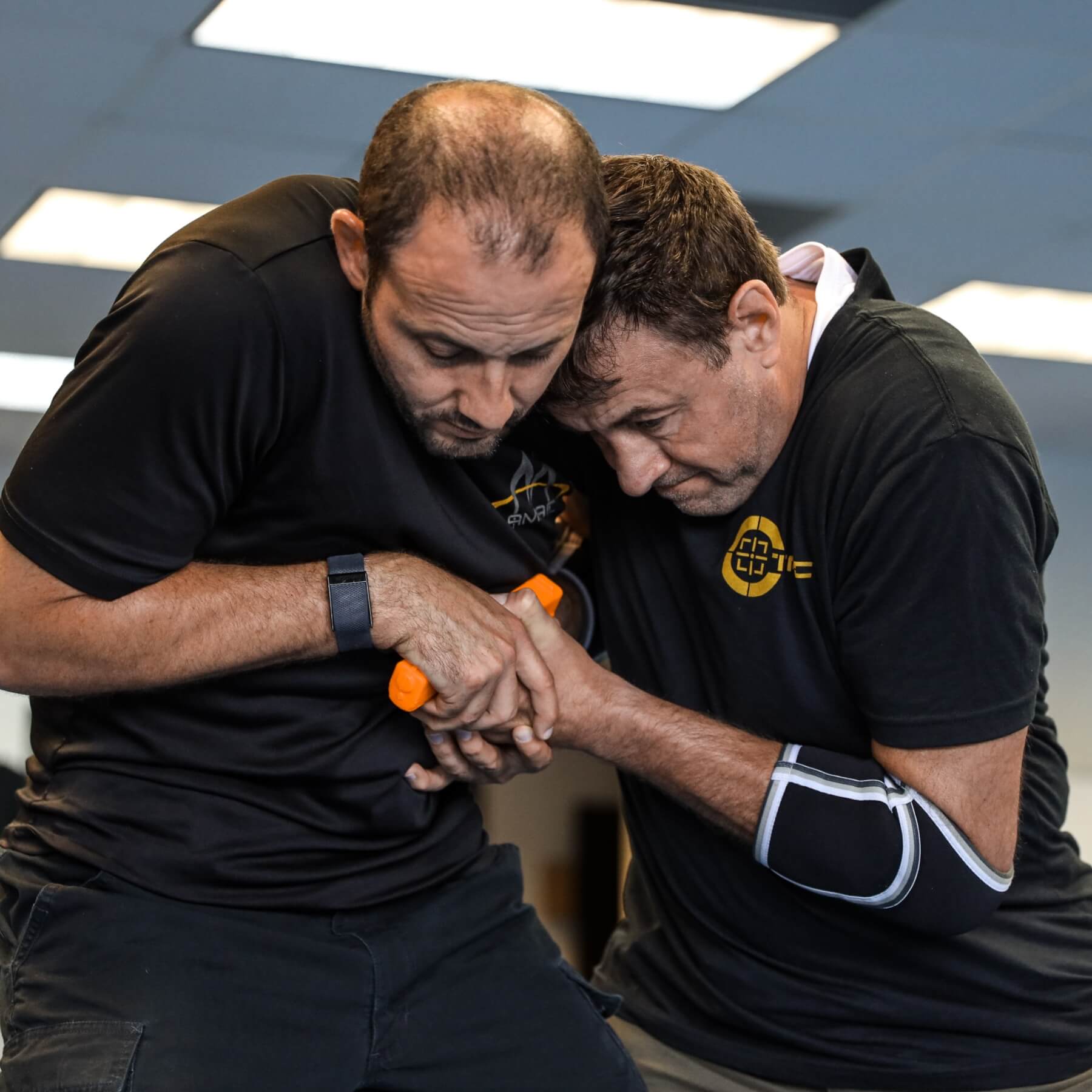
It is an environment for the student to polish what we call the "gift of gab." Some individuals will be familiar with this exchange due to life experiences or training, but for those who are not, this drill will give you a drill to play with to become more comfortable with navigating this exchange.
Training in the "Range" of Verbal Confrontation
The term "range" in combat often refers to the distance between opponents. However, in the context of the social buildup to physical engagement, "range" can be understood as the spectrum of interactions that precede actual combat. This includes verbal sparring, attempts at intimidation, and the dance of body language that can either lead to or prevent a physical altercation.
Training in this "range" is essential for multiple reasons. First, it equips individuals with the skills to avoid physical conflict altogether potentially. A well-negotiated verbal exchange can diffuse a volatile situation, rendering physical engagement unnecessary. Additionally, mastering this range instills confidence in individuals, ensuring they don't inadvertently escalate situations due to nervousness or lack of awareness.
Legal Implications in the Dance of Defense
Beyond the immediate threat, civilians must always be mindful of the legal ramifications of their actions. Engaging in self-defense has its legal intricacies. Depending on the jurisdiction, the techniques and levels of force employed can have varying legal consequences.
Even if it's an empty-hand technique, every physical move carries potential legal implications. Sometimes, the law might influence the techniques one opts for at different stages of the confrontation. Hence, understanding the legal landscape is paramount. This knowledge ensures that one's response not only neutralizes the threat but also remains within the bounds of the law.
Physical combat is but one facet of confrontation. The dance that precedes it, laden with social nuances and legal considerations, is equally significant. By acknowledging and training in this holistic spectrum of conflict, one can navigate confrontations more effectively, ensuring safety, legal compliance, and, when possible, peaceful resolutions.
Secure your spot in the next Mat to Muzzle course from Warrior Poet Society here.
